To achieve these goals, the ASEAN Heritage Parks Program in Vietnam implements comprehensive management plans, sustainable forest management practices, capacity building programs, monitoring and evaluation systems, increased local community participation, and sustainable financial support for the parks. These initiatives aim to effectively protect threatened areas while empowering local stakeholders in managing these exceptional natural spaces.
10 Vietnamese National Parks Recognized as ASEAN Heritage Parks
Ba Be National Park – 1992 – Bac Kan Province
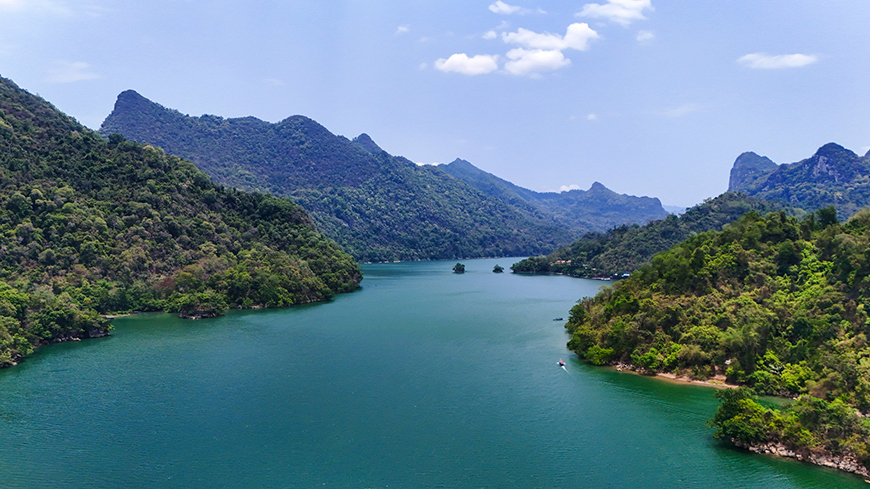 Ba Be lake is one of the 20 largest natural freshwater lakes in the world - Mr Linh's Adventures
Ba Be lake is one of the 20 largest natural freshwater lakes in the world - Mr Linh's Adventures
Known for its natural lake and karst landscapes, it's part of northern Vietnam's natural heritage. This 10,048-hectare park, created in 1982, is centered around Ba Be Lake, Vietnam's largest and highest natural freshwater lake (about 150 meters above sea level). Composed of three small lakes (Pe Leng, Pe Lu, and Pe Lam), hence its name meaning "three lakes" in the Tay language, it's famous for its spectacular karst landscapes, biodiversity-rich tropical forests, and numerous caves and waterfalls. The park enjoys international protection as a Ramsar site for its wetlands. An ecological and cultural gem, it's home to 65 mammal species (including pangolins, macaques, and Asian black bears) and dense, diverse flora. Ba Be National Park is also home to ethnic minority communities, mainly the Tay, who live in harmony with nature in traditional stilt villages.
Why you'll love exploring Ba Be Park
It offers breathtaking panoramic views with its karst mountains, dense forests, rivers, and waterfalls (like Dau Dang). Ba Be Lake, with its emerald waters, is ideal for relaxation and photography. It's an exceptional playground for trekking, hiking, mountain biking, caving in its many caves, as well as kayaking and boat trips on the lake and Nang River. It's a must-see destination for nature lovers and travelers seeking authenticity in Vietnam, offering a unique combination of spectacular landscapes, outdoor activities, cultural richness, and commitment to ecological conservation.
Bai Tu Long National Park – 2001 – Quang Ninh Province
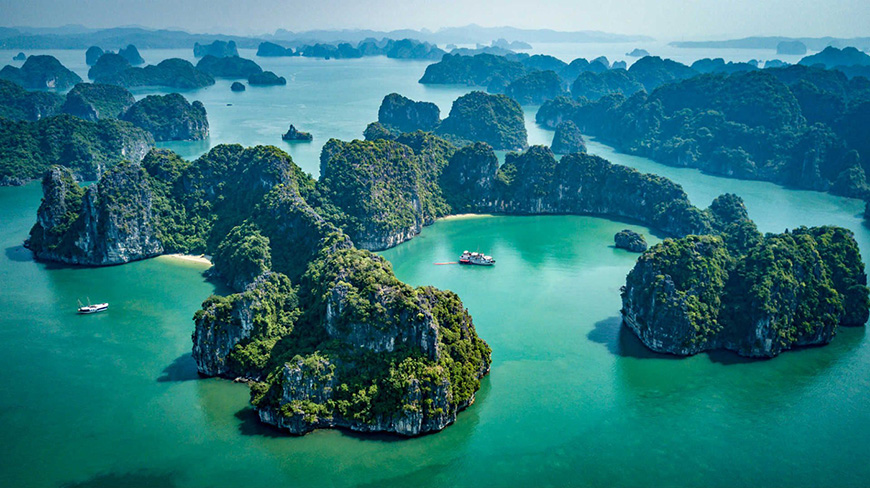 Bai Tu Long is considered as one of the hotspots on biodiversity of Viet Nam - Internet
Bai Tu Long is considered as one of the hotspots on biodiversity of Viet Nam - Internet
Located in Bai Tu Long Bay, near the famous
Ha Long Bay, this park is a
UNESCO World Heritage site. Covering 15,783 hectares (including 6,125 hectares of island land and 9,658 hectares of marine areas), it's part of a less frequented region than Halong Bay, offering a pristine natural environment with over 80 karst islands and islets. Considered one of Vietnam's best national parks, Bai Tu Long is a refuge for endangered animals and marine creatures and boasts a rich floral diversity. It has over 170 species of aquatic plants, 100 species of corals, 110 species of fish, and 130 species of vertebrates, making it a popular spot for nature enthusiasts.
Why you'll love exploring Bai Tu Long Park
The park combines three major ecosystems (terrestrial forests, karst formations, and marine areas), offering a wide variety of landscapes with untouched beaches, primary forests, impressive caves (like Doi Cave), and some of the world's richest coral reefs. The mangrove forest on Cai Lim Island is also remarkable in Southeast Asia. Outdoor enthusiasts can enjoy hiking, boat cave exploration, kayaking, scuba diving, and snorkeling in crystal-clear waters, or relax on deserted beaches. Traditional fishing and exploring island villages add a cultural dimension.
Hoang Lien National Park – 2006 – Lao Cai & Lai Chau Provinces
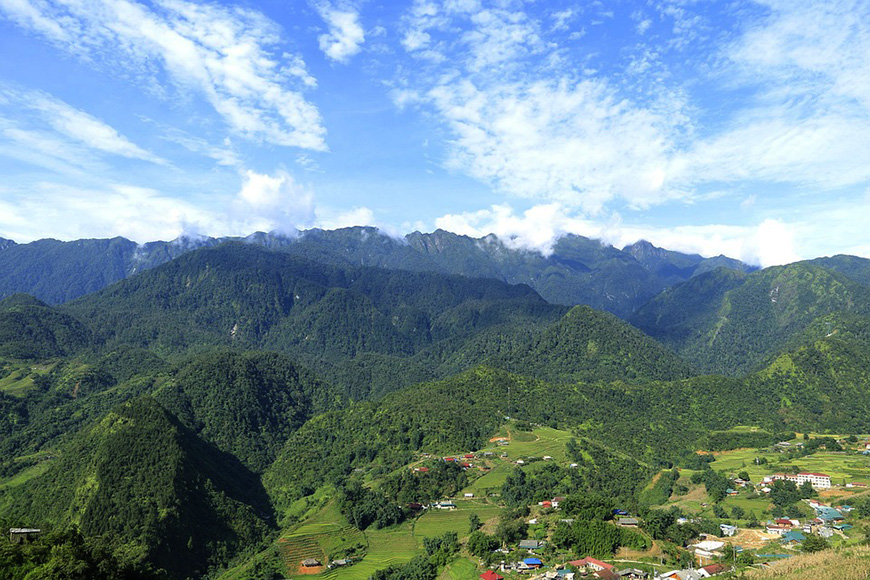 Hoang Lien National Park is one of the most important national parks in Vietnam - Internet
Hoang Lien National Park is one of the most important national parks in Vietnam - Internet
Located in the northern mountains, this park is recognized for its varied ecosystems and natural richness. Its 29,845 hectares encompass the Hoang Lien Son mountain range, including Fansipan Mountain (3,143 meters), Indochina's highest peak, making it an iconic destination for mountain and nature lovers. Created in 2002, it is divided into several zones: a strictly protected core, a rehabilitation zone, an administrative services zone, and a buffer zone. Its rich biodiversity has earned it recognition as a plant diversity center by the IUCN and as an ASEAN Heritage Park.
Why you'll love exploring Hoang Lien Park
It's a biodiversity hotspot with over 2,000 plant species (including 66 listed in the Red Book of Vietnam) and rich fauna including 66 mammal species (16 of which are endangered), 347 bird species, 41 amphibian species, and 61 reptile species. This diversity makes it a major site of scientific and ecological interest. The Hoang Lien Son range offers impressive panoramas with steep mountains, deep valleys (like Muong Hoa Valley), dense forests, and famous passes (like O Quy Ho). The peaks, waterfalls (notably Silver Waterfall and Love Waterfall), and high-altitude tropical forests create an exceptional natural setting. It's an ideal playground for hiking, trekking, bird watching, mountain biking, and climbing.
Vu Quang National Park – 2002 – Ha Tinh Province
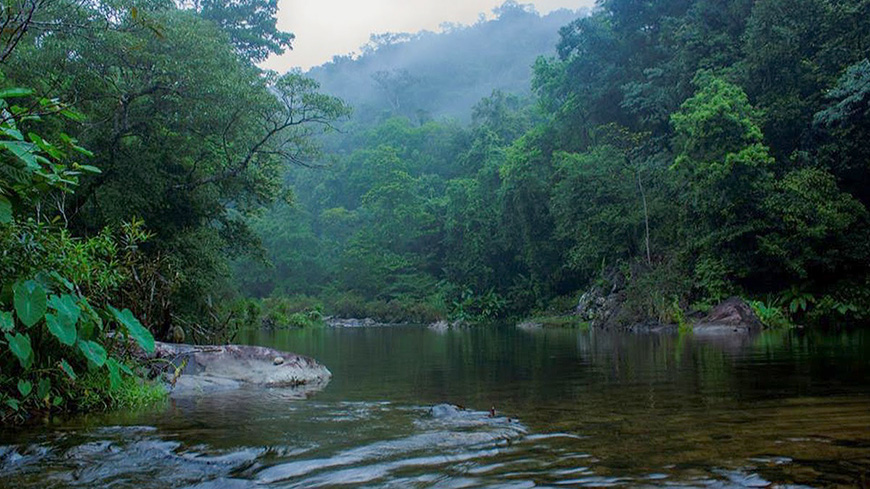 Vu Quang is a remote forested region of Vietnam - Internet
Vu Quang is a remote forested region of Vietnam - Internet
Created in 2002, this park is among the national parks recognized as ASEAN heritage for its exceptional biodiversity and spectacular mountainous landscapes in the Annamite mountain range. It covers approximately 52,882 hectares, almost 97% of which are natural forests, harboring several rare and endemic animal species, such as the saola ("Asian unicorn"), giant muntjac, northern white-cheeked gibbon, and new species of deer and fish. The park has about 60 mammal species, 187 bird species, 38 reptile species, 26 amphibian species, and 56 fish species, making it a biodiversity hotspot. Characterized by mountainous terrain (from 30 to over 2,000 meters in altitude), narrow valleys, steep slopes, rivers, and numerous subtropical and tropical evergreen forests, the park offers an ideal setting for adventure and nature observation activities.
Why you'll love exploring Vu Quang Park
Vu Quang is a paradise for trekking enthusiasts, wildlife observers, nature photographers, and primary forest explorers. Its ecological richness also allows for educational visits on endangered species conservation. Located about 75 km from Ha Tinh city, the park is undergoing tourism development focused on environmental protection and biodiversity enhancement. Its recognition as an ASEAN Heritage Park underscores its regional importance.
Kon Ka Kinh National Park – 2002 – Kon Tum Province
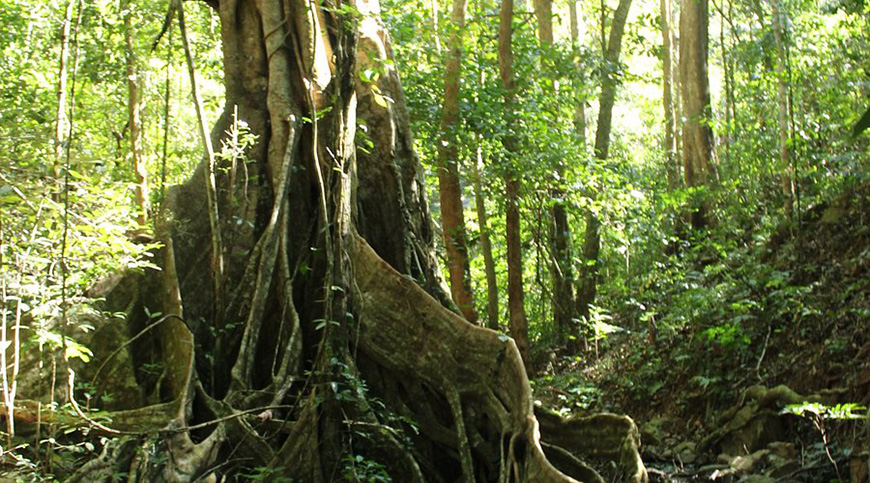 Kon Ka Kinh is truly primary jungle - Internet
Kon Ka Kinh is truly primary jungle - Internet
Located on the Kon Tum Plateau in Gia Lai Province, Central Highlands region, this national park covers approximately 41,780 hectares. Created in 2002, it is recognized as an ASEAN Heritage Park for its exceptional biodiversity and its major ecological role in protecting the watersheds of the Ba and Dak Pne rivers, essential for local agriculture. Its highest point is Mount Kon Ka Kinh, at 1,748 meters above sea level. Local populations depend on the park's resources for firewood, honey, rattan, and at least 110 medicinal plants.
Why you'll love exploring Kon Ka Kinh National Park
The park is home to a wide variety of ecosystems, ranging from subtropical evergreen forests to coniferous forests. It is a refuge for many rare and endangered animal species, such as the Indochinese tiger, gaur, gray-shanked douc, as well as a multitude of birds, reptiles, and amphibians. In a spectacular mountainous landscape, the park is an ideal destination for hiking, bird and wildlife observation, botanical discovery, and nature photography. Several trails allow exploration of the forest and access to panoramic viewpoints. Ecological tourism is encouraged to preserve the site's integrity. With its diverse ecotourism activities and vital role in preserving local water and cultural resources, Kon Ka Kinh is a preferred destination for lovers of wild nature and ecological adventure.
Chu Mom Ray National Park – 2002 – Gia Lai Province
 Chu Mom Ray National Park is a beautiful destination located in the Kon Tum Province - Internet
Chu Mom Ray National Park is a beautiful destination located in the Kon Tum Province - Internet
Named after the region's highest mountain (1,773 meters), this park is important for tropical forest and wildlife conservation in the Central Highlands. Created in 2002, it covers approximately 56,600 hectares. It is recognized as an ASEAN heritage site for its exceptional biodiversity and its crucial role in conserving the region's tropical ecosystems, particularly due to its strategic position on the border with Laos and Cambodia. The park is adjacent to Virachey National Park in Cambodia and the South-East Ghong Nature Reserve in Laos.
Why you'll love exploring Chu Mom Ray Park
It is home to the vast semi-submerged primary tropical forest, considered the largest primary forest area in Vietnam and Southeast Asia. It contains approximately 270,000 plant species, 97 mammal species, 270 bird species, 69 reptile and amphibian species, and 19 freshwater fish species[cite:1 59]. Among these species, 78 are rare and listed in the Red Book of Vietnam, with several endemic to the Indochinese region. The park is nicknamed "kingdom of monkeys and gibbons" because it hosts many rare primate species. Its spectacular mountainous landscapes, alternating rivers and waterfalls, also hide remarkable volcanic caves, including the Krong No cave system, the largest volcanic cave network in Southeast Asia. The park offers various activities: trekking, wildlife observation (night safaris), nature photography, camping, mountain biking, rafting on the Sesan River, and discovering waterfalls, allowing for total immersion in a preserved natural environment. Chu Mom Ray is also home to several local ethnic minorities (Ba Na, Xe Dang, Gia Rai), and it's possible to discover their traditional way of life, customs, and crafts through community tourism.
Bidoup-Nui Ba National Park – 2004 – Lam Dong Province
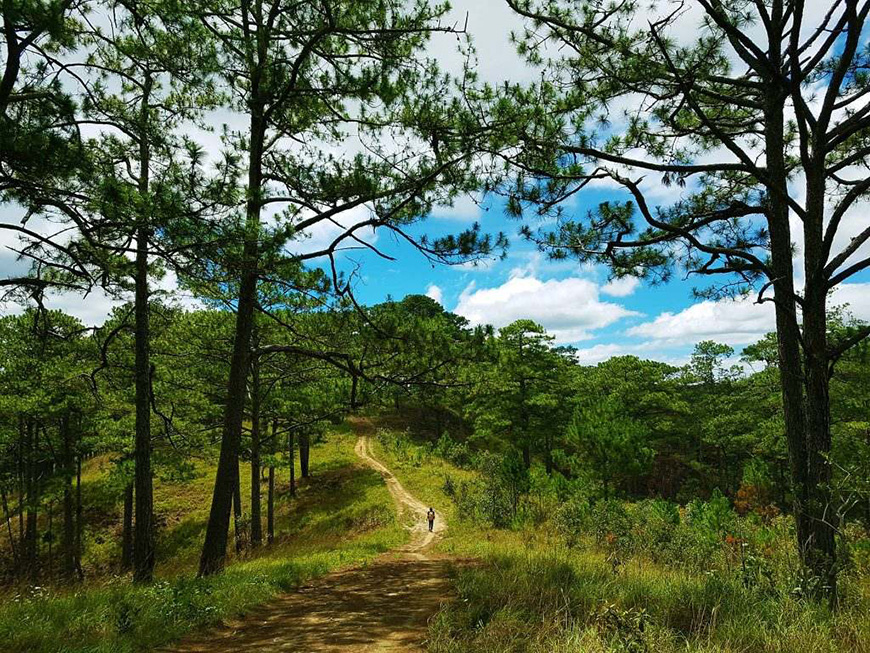 Bisoup-Nui Ba is a great choice for you to go back to nature - Internet
Bisoup-Nui Ba is a great choice for you to go back to nature - Internet
Located about 30 km from Da Lat, its 70,000 hectares, 91% of which are covered by primary forests, make it an ideal place for trekking and camping. Recognized as an ASEAN heritage site since 2018, Bidoup-Nui Ba is also part of the Langbiang Biosphere Reserve, classified by UNESCO. The park is home to nearly 2,000 species of vascular plants, including about 290 orchid species, making it Vietnam's "orchid kingdom". Many rare species listed in the Vietnamese Red Book are also found here, such as red pine, blue cypress, and five-leaf pine. The fauna is also rich with over 400 vertebrate species, including rare primates like the endangered yellow-cheeked gibbon.
Why you'll love exploring Bidoup-Nui Ba Park
Perched on a high mountain plateau culminating at 2,287 meters (Bidoup), with dense forests, bamboo groves, grasslands, waterfalls, and trails winding through varied landscapes, the park offers breathtaking panoramic views and full immersion in nature. Hiking, trekking, climbing, and rafting enthusiasts will find their paradise here.
Lo Go – Xa Mat National Park – 2002 – Tay Ninh Province
 This park is the largest single forested area in Tay Ninh Province - Internet
This park is the largest single forested area in Tay Ninh Province - Internet
Created in 2002 from the Lo Go-Xa Mat Nature Reserve, the park's approximately 30,022 hectares represent the largest forest area in Tay Ninh province. Recognized as an ASEAN Heritage Park in 2019, Lo Go – Xa Mat is the only one in Vietnam's southeastern region to hold this status. This park features lowland evergreen forests and various wetland habitats, including seasonally flooded grasslands and permanent lakes. It is home to over 700 plant species, 49 mammal species, 203 bird species, and 53 reptile species. The mosaic of its ecosystems is particularly rich and dense, including tropical evergreen forests, deciduous forests, seasonally flooded grasslands, swamps, and waterways, providing habitat for many rare and endangered species, such as trắc (a precious wood), bách bệnh trút (medicinal tree), and the red-headed crane, a rare migratory bird.
Why you'll love Lo Go – Xa Mat Park
Located in a low-lying area (15 to 40 meters altitude), with dense forests, rivers, floodplains, and wetlands, Lo Go-Xa Mat offers a succession of natural landscapes suitable for hiking, wildlife observation, and discovering aquatic and terrestrial ecosystems. This park is also a place steeped in history, having been a strategic center during the resistance war against the United States. It is home to major historical sites such as the headquarters of the Provisional Revolutionary Government of the Republic of South Vietnam, the liberation radio station, and other remnants related to the struggle for independence. Visitors will enjoy cycling or walking along the banks of the Vam Co Dong River. One can also venture to climb to the top of a 33-meter watchtower to admire a heritage tree over 200 years old. It's an opportunity to fully immerse yourself in nature and local culture.
U Minh Thuong National Park – 2002 – Kien Giang Province
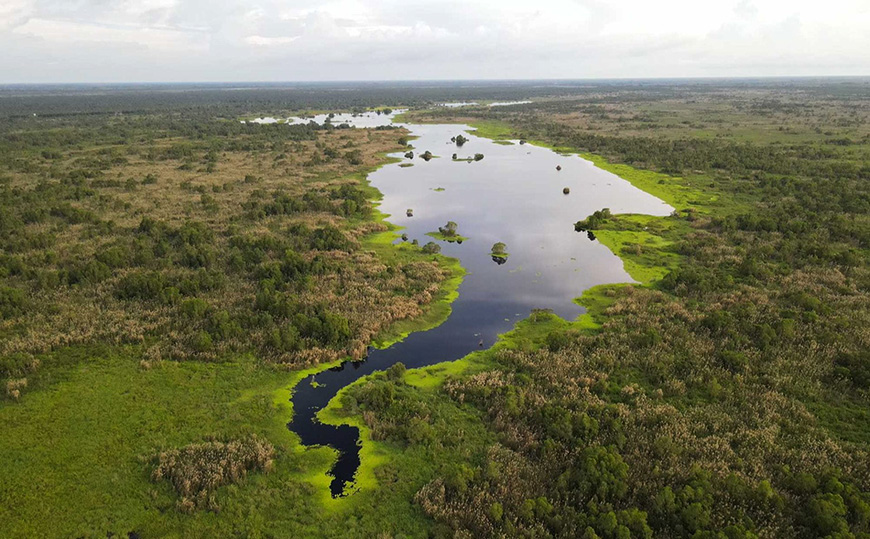 U Minh Thuong National Park is home to an incredible diversity of flora and fauna - Internet
U Minh Thuong National Park is home to an incredible diversity of flora and fauna - Internet
Located in the Mekong Delta, this park is not only recognized as a UNESCO biosphere reserve but is also listed as a Ramsar site and an ASEAN natural heritage site, underscoring its major ecological importance. The park is home to a rich biological diversity with approximately 258 plant species, 32 mammal species, 184 bird species, 64 fish species, as well as 34 reptile and amphibian species. Furthermore, U Minh Thuong protects one of the last large peat swamps in the Mekong Delta, characterized by melaleuca (cajeput) forests, seasonally flooded grasslands, and natural canals. These environments create aquatic and forest landscapes of great beauty, particularly around Hoa Mai Lake and the vast rivers covered with water lentils.
Why you'll love exploring U Minh Thuong Park
A refuge for over 180 bird species, the park is a paradise for ornithologists, both amateur and professional. It notably hosts the Trang Chim bird sanctuary, accessible by a bamboo walkway, which allows visitors to observe thousands of birds in their natural habitat, offering an impressive natural spectacle. U Minh Thuong can be explored on foot, by boat, or by bicycle, to enjoy the hiking trails, take a break at the wildlife rescue and rehabilitation center, and observe biodiversity in a preserved setting. The park also offers cultural experiences related to local communities living around the reserve.
Natural treasures to preserve
Vietnam's national parks, recognized by ASEAN, are true treasures of biodiversity and unique ecosystems, essential for nature conservation and sustainable tourism development. With 12 sites in total, Vietnam has the highest number of ASEAN Heritage Parks (AHPs) in Southeast Asia, and the 10 presented here illustrate the region's exceptional richness and diversity. These "heritage gardens" are crucial for conserving ecological processes and genetic diversity, while also promoting ecotourism, research, education, and the preservation of local cultures. Their recognition underscores the importance of these sites in regional and global biodiversity conservation efforts. They represent not only essential destinations for nature lovers and travelers seeking authenticity but also symbols of Vietnam's commitment to protecting its natural and cultural heritage.